Book Of Kells: Illuminated Medieval Manuscript From Monastery On Iona, Scotland
A. Sutherland - AncientPages.com - One of the most important monuments of Irish Christianity and works of Irish-Saxon art is the famous Book of Kells (now in the Trinity College Library in Dublin, Ireland).
The Book of Kells is an illuminated manuscript probably created by Celtic monks in a monastery on the island of Iona, c. 800 AD.
 The Book of Kells is an integral part of an exhibition that attracts over 500,000 visitors to Trinity College in Dublin each year. Image credit: Jeff Pioquinto/Flickr
The Book of Kells is an integral part of an exhibition that attracts over 500,000 visitors to Trinity College in Dublin each year. Image credit: Jeff Pioquinto/Flickr
The book's name originates from the monastery of Kells, County Meath, Ireland. This magnificent manuscript was brought to Kells following a Viking raid on the monastery on the island of Iona, Scotland, in 806.
The first mention of this work of art can be found in the Annals of Ulster under the year 1007 AD.
Based on the records, 'the great Gospel book of Columcille, the chief relic of the western world, was stolen during the night from the great stone church of Cenannus (Kells).'
The Book of Kells contains the complete text of the Gospels of the New Testament, which means Matthew, Mark, and Luke, and the Gospel of John through John 17:13, written in black, red, purple, and yellow ink in an insular majuscule script, preceded by prefaces, summaries, and concordances of Gospel passages.
Illustration from the Book of Kells. Credit: Wikipedia
The manuscript is in excellent condition, considering its great age, but many pages have suffered some damage to the delicate artwork due to rubbing. The book was probably the product of a major scriptorium, a room in medieval European monasteries devoted to monastic scribes' writing, copying, and illuminating of manuscripts by monastic scribes. It took many years to accomplish the work. However, the book was never finished, and the projected decoration of some pages appeared only in outline.
Additionally, it is believed that some 30 folios of the original manuscript have been lost over the centuries.
Researchers assume the manuscript was created as one book containing all four Gospels, but new research reveals this assumption is false.
 The Book of Kells showing the lavishly decorated text that opens the Gospel of John. Credit: Wikipedia
The Book of Kells showing the lavishly decorated text that opens the Gospel of John. Credit: Wikipedia
However, a very meticulous analysis conducted by Dr. Bernard Meehan of Trinity College, Dublin, shows that the Book of Kells was initially composed of two separate works up to half a century apart.
Many full-page miniatures beautifully decorate the text of the Book of Kells, and countless miniature painted decorations appear throughout the work. The decoration of the book is famous for combining intricate detail with bold and energetic compositions.
The colorful illustrations and monastic scribes often use purple, lilac, red, pink, green, and yellow.
The decoration of the book is not only limited to the primary pages. Scattered through the text are decorated initials, and various small figures of animals and humans are interconnected with complicated Celtic knots and interlacing patterns.
No earlier surviving manuscript has this massive amount of decoration.
In 2011, the Book of Kells was added to the UNESCO World Records list.
Updated on January 12, 2024
Written by – A. Sutherland - AncientPages.com Senior Staff Writer
Copyright © AncientPages.com All rights reserved. This material may not be published, broadcast, rewritten or redistributed in whole or part without the express written permission of AncientPages.com
Expand for referencesMore From Ancient Pages
-
 New Type Of Early Previously Unknown Human Discovered In Israel
Archaeology | Jun 29, 2021
New Type Of Early Previously Unknown Human Discovered In Israel
Archaeology | Jun 29, 2021 -
 Is A Gigantic Ancient City Hidden Underwater In The Bermuda Triangle?
Featured Stories | Jul 8, 2014
Is A Gigantic Ancient City Hidden Underwater In The Bermuda Triangle?
Featured Stories | Jul 8, 2014 -
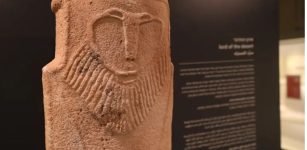 Never-Before-Seen Ancient Statue Of The ‘Lord Of The Desert’ Revealed To The Public – But Who Was He?
Artifacts | Mar 19, 2022
Never-Before-Seen Ancient Statue Of The ‘Lord Of The Desert’ Revealed To The Public – But Who Was He?
Artifacts | Mar 19, 2022 -
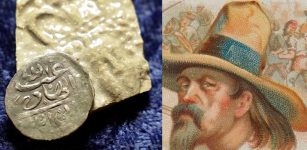 Can This Ancient Coin Solve The Mysterious Disappearance Of Pirate Henry Every?
Archaeology | Apr 1, 2021
Can This Ancient Coin Solve The Mysterious Disappearance Of Pirate Henry Every?
Archaeology | Apr 1, 2021 -
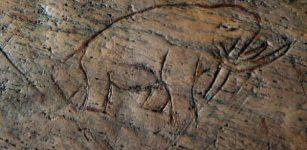 Controversial Study Of Ancient DNA Could Re-Write History Of South Florida And Prove Humans And Huge Prehistoric Animals Co-Existed
Archaeology | Sep 23, 2014
Controversial Study Of Ancient DNA Could Re-Write History Of South Florida And Prove Humans And Huge Prehistoric Animals Co-Existed
Archaeology | Sep 23, 2014 -
 Mjölnir: Thor’s Terrible Axe-Hammer And Its Magical Powers In Norse Mythology
Featured Stories | Apr 20, 2017
Mjölnir: Thor’s Terrible Axe-Hammer And Its Magical Powers In Norse Mythology
Featured Stories | Apr 20, 2017 -
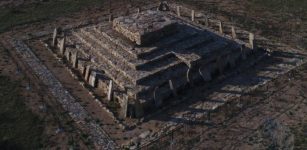 Intriguing 3,400-Year-Old Multipurpose Pyramid Found In Kazakhstan
Archaeology | Nov 2, 2023
Intriguing 3,400-Year-Old Multipurpose Pyramid Found In Kazakhstan
Archaeology | Nov 2, 2023 -
 On This Day In History: Great Fire Of Rome Recorded – On July 18, 64 AD
News | Jul 18, 2016
On This Day In History: Great Fire Of Rome Recorded – On July 18, 64 AD
News | Jul 18, 2016 -
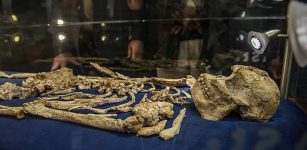 ‘Little Foot’ Is An Entirely New Species Of Early Human – Researchers Say
Archaeology | Jan 3, 2019
‘Little Foot’ Is An Entirely New Species Of Early Human – Researchers Say
Archaeology | Jan 3, 2019 -
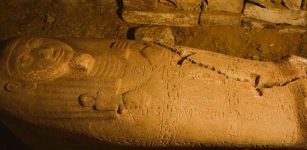 Sarcophagus Of King Ramses II’s Head Of Treasury Found In Saqqara, Giza
Archaeology | Sep 20, 2022
Sarcophagus Of King Ramses II’s Head Of Treasury Found In Saqqara, Giza
Archaeology | Sep 20, 2022 -
 New Path For Early Human Migrations Contradicts A Single ‘Out Of Africa’ Theory
Evolution | Oct 5, 2023
New Path For Early Human Migrations Contradicts A Single ‘Out Of Africa’ Theory
Evolution | Oct 5, 2023 -
 Was The World’s Oldest Surviving Garden Created By Ancestors Of The Katzie First Nation 3,800 Years Ago In British Columbia?
Archaeology | Dec 27, 2016
Was The World’s Oldest Surviving Garden Created By Ancestors Of The Katzie First Nation 3,800 Years Ago In British Columbia?
Archaeology | Dec 27, 2016 -
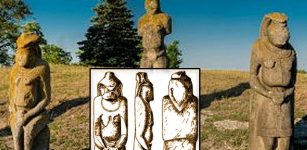 Striking Ancient Stone Idols: The Forgotten Polovtsian Statues Of Eastern Europe
Featured Stories | Mar 8, 2014
Striking Ancient Stone Idols: The Forgotten Polovtsian Statues Of Eastern Europe
Featured Stories | Mar 8, 2014 -
 Is A Small Obsidian Artifact Linked To Expedition Searching For A Fabled City Of Gold 470 Years Ago?
Archaeology | Mar 1, 2024
Is A Small Obsidian Artifact Linked To Expedition Searching For A Fabled City Of Gold 470 Years Ago?
Archaeology | Mar 1, 2024 -
 On This Day In History: Mayan King Bird Jaguar IV Assumes The Throne – On May 3, 752
News | May 3, 2016
On This Day In History: Mayan King Bird Jaguar IV Assumes The Throne – On May 3, 752
News | May 3, 2016 -
 Two Men Sentenced To Prison For Vandalism Of 4,000-Year-Old Petroglyphs In Nevada
Archaeology | Nov 12, 2022
Two Men Sentenced To Prison For Vandalism Of 4,000-Year-Old Petroglyphs In Nevada
Archaeology | Nov 12, 2022 -
 On This Day In History: ‘Battle On The Ice’ – Army Of Prince Nevsky Against Teutonic Knights Was Fought – On Apr 5, 1242
News | Apr 5, 2016
On This Day In History: ‘Battle On The Ice’ – Army Of Prince Nevsky Against Teutonic Knights Was Fought – On Apr 5, 1242
News | Apr 5, 2016 -
 Bacho Kiro Cave: Early Homo Sapiens Groups In Europe Faced Subarctic Climates
Archaeology | Sep 24, 2021
Bacho Kiro Cave: Early Homo Sapiens Groups In Europe Faced Subarctic Climates
Archaeology | Sep 24, 2021 -
 On This Day In History: Hubble Space Telescope Was Launched – On April 24, 1990
News | Apr 24, 2016
On This Day In History: Hubble Space Telescope Was Launched – On April 24, 1990
News | Apr 24, 2016 -
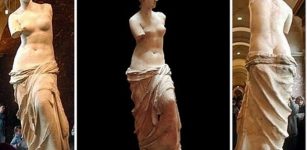 On This Day In History: Statue Of Venus de Milo Is Discovered On The Aegean Island Of Milos – On Apr 8, 1820
News | Apr 8, 2016
On This Day In History: Statue Of Venus de Milo Is Discovered On The Aegean Island Of Milos – On Apr 8, 1820
News | Apr 8, 2016

